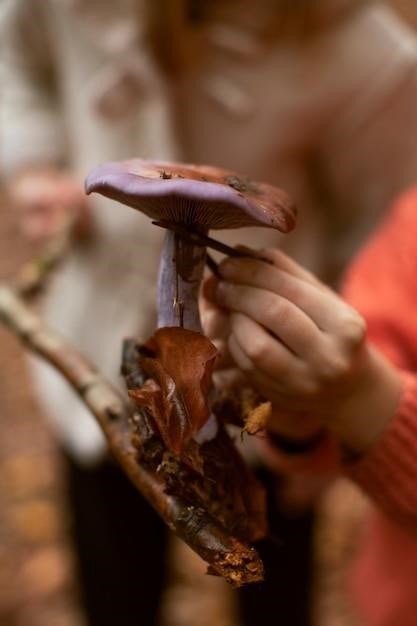audubon society field guide to north american mushrooms
National Audubon Society Field Guide to North American Mushrooms
The National Audubon Society Field Guide to North American Mushrooms is a comprehensive resource for mushroom enthusiasts․ This field guide is widely recognized as the most comprehensive available, featuring over 700 full-color identification photographs․ The guide’s visual organization by color and shape makes it easy to identify mushrooms․ It is a must-have for any mushroom hunter’s backpack or home library․
Introduction
The National Audubon Society Field Guide to North American Mushrooms is a comprehensive and authoritative guide to the diverse world of fungi found across North America․ Originally published in 1981, this field guide has become a staple for both novice and experienced mushroom enthusiasts, offering a wealth of information and detailed illustrations to help identify and understand the fascinating kingdom of mushrooms․ With over 700 full-color identification photographs, the guide provides a visually rich and engaging experience, making the process of mushroom identification both enjoyable and informative․ This guide is considered the most comprehensive photographic field guide to the mushrooms of North America, featuring a durable vinyl binding that makes it a practical and durable companion for any mushroom hunting expedition․
Comprehensive Coverage

The National Audubon Society Field Guide to North American Mushrooms boasts a remarkable level of comprehensiveness, covering a vast array of mushroom species found across the continent․ With over 700 species detailed with color photographs and descriptive text, it provides an extensive and detailed overview of the fungal kingdom․ This comprehensive guide is a valuable resource for anyone interested in learning about the diverse world of mushrooms, from the common and familiar to the rare and unusual․ The guide’s coverage extends beyond the identification of individual species, also incorporating information on habitat, seasonality, edibility, and potential look-alikes, equipping readers with a comprehensive understanding of each mushroom’s characteristics and ecological role․
Visual Organization
The National Audubon Society Field Guide to North American Mushrooms employs a visually intuitive and user-friendly approach to organization․ The guide’s layout prioritizes visual identification, grouping mushrooms by color and shape․ This approach streamlines the identification process, allowing readers to quickly narrow down their search based on the mushroom’s visual characteristics․ The full-color photographs depict mushrooms in their natural habitats, providing a realistic representation of their appearance and context․ This visually driven organization enhances the guide’s accessibility, making it suitable for both novice and experienced mushroom enthusiasts․ The clear visual structure facilitates efficient exploration of the guide, enabling readers to readily locate specific species or explore different groups of mushrooms based on their shared visual features․
Detailed Species Descriptions
The National Audubon Society Field Guide to North American Mushrooms goes beyond simple identification by providing detailed descriptions of each species․ Each mushroom entry includes a comprehensive account of its physical characteristics, encompassing features such as cap shape, gill attachment, stipe length, and spore print color․ The descriptions are precise and informative, using clear and concise language to convey essential information about each mushroom’s morphology․ These descriptions are complemented by high-quality photographs that accurately depict the mushrooms’ appearance, allowing readers to cross-reference the written descriptions with visual representations․ This combination of detailed text and visual aids provides a comprehensive understanding of each species’ unique traits, enhancing the accuracy and reliability of mushroom identification․
Edibility Information
The National Audubon Society Field Guide to North American Mushrooms recognizes the importance of safety when it comes to foraging for wild mushrooms․ For each species, the guide clearly indicates its edibility status, using a simple and consistent system․ Edible mushrooms are labeled as such, while poisonous species are clearly marked as “inedible” or “toxic․” This straightforward labeling system helps users quickly determine if a mushroom is safe for consumption or should be avoided․ The guide also provides additional information on the potential effects of consuming certain species, highlighting the importance of caution and proper identification․ This information is essential for safeguarding the health of mushroom enthusiasts, encouraging responsible foraging practices, and promoting a deeper understanding of the complexities of mushroom edibility․
Seasonality and Habitat
The National Audubon Society Field Guide to North American Mushrooms goes beyond simple identification, delving into the ecological intricacies of each species․ It offers detailed insights into the seasonality and habitat preferences of each mushroom, providing valuable information for successful foraging․ The guide carefully outlines the ideal time of year to find specific species, whether they thrive in the spring, summer, fall, or even winter․ It also meticulously describes the preferred habitats of these fungi, ranging from decaying wood and bark to grassy meadows and forested environments․ By understanding these crucial factors, enthusiasts can maximize their chances of finding particular mushrooms during their peak seasons and in the most suitable locations․ This detailed information empowers mushroom hunters to navigate the natural world with a deeper understanding of the interconnectedness of fungi and their environments․
Range and Look-Alikes
The National Audubon Society Field Guide to North American Mushrooms provides a comprehensive understanding of the geographic distribution of each mushroom species, helping foragers locate them in specific regions․ The guide outlines the range of each species, indicating where they are commonly found across North America․ This information is crucial for successful foraging, as it allows enthusiasts to target their searches based on their location․ To further enhance safety and accuracy, the guide also addresses the potential for confusing similar-looking mushrooms, known as “look-alikes․” Detailed descriptions and high-quality photographs highlight the subtle differences between these species, preventing accidental misidentification․ By emphasizing the importance of careful observation and comparison, the guide empowers readers to confidently distinguish between edible and potentially toxic mushrooms, ensuring a safe and enjoyable foraging experience․
Alternative Names and Facts
The National Audubon Society Field Guide to North American Mushrooms goes beyond simple identification, offering a wealth of intriguing information about each species․ Beyond its scientific name, the guide often lists common names, regional variations, and historical uses․ This approach provides a deeper understanding of the cultural and historical significance of mushrooms, connecting the reader to a wider world of knowledge․ The guide also presents interesting facts about each mushroom’s unique characteristics, ecological role, and potential medicinal properties․ These insights add a layer of fascination to the identification process, transforming the experience from a mere exercise in classification to a journey of discovery․ The guide’s dedication to highlighting alternative names and intriguing facts encourages readers to engage with mushrooms on a deeper level, fostering a greater appreciation for the diverse world of fungi․

Cooking and Eating Wild Mushrooms
The National Audubon Society Field Guide to North American Mushrooms recognizes the allure of foraging and using wild mushrooms in cuisine․ It goes beyond identification, providing a dedicated section on the culinary aspects of wild mushrooms․ This section offers practical guidance on preparing and cooking wild mushrooms, emphasizing safety and proper handling․ The guide emphasizes the importance of accurate identification, cautioning against consuming any mushroom without absolute certainty․ It provides information on common cooking methods and recipes, allowing readers to explore the diverse flavors and textures of different species․ The guide also highlights the need for responsible harvesting practices, promoting sustainable foraging for future generations․ By combining identification with culinary knowledge, the guide encourages readers to explore the exciting world of wild mushrooms while ensuring their safety and environmental responsibility․
Mushroom Parts Identification
The National Audubon Society Field Guide to North American Mushrooms emphasizes the importance of understanding mushroom anatomy for accurate identification․ The guide provides detailed illustrations and descriptions of key mushroom parts, aiding in precise identification․ It covers the cap, gills, stem, volva, annulus, and other essential features, explaining their variations across species․ The guide also illustrates different types of spore prints, a crucial identification tool․ By understanding these features, readers can confidently distinguish between similar species and avoid potentially dangerous mistakes․ This section serves as a foundational guide for any aspiring mushroom identifier, equipping them with the knowledge necessary for safe and accurate identification․
The National Audubon Society Field Guide to North American Mushrooms stands as a definitive resource for anyone interested in exploring the fascinating world of fungi․ With its comprehensive coverage, detailed descriptions, and visually appealing organization, this guide empowers both novice and experienced mushroom enthusiasts to confidently identify and appreciate the diverse array of North American mushrooms․ The guide’s commitment to accuracy and accessibility makes it an invaluable tool for anyone venturing into the field of mycology, fostering a deeper understanding and appreciation for the vital role these organisms play in our ecosystems․ Whether you’re a seasoned mushroom hunter or a curious beginner, the National Audubon Society Field Guide provides a solid foundation for safe and enjoyable exploration of the fungal kingdom․


